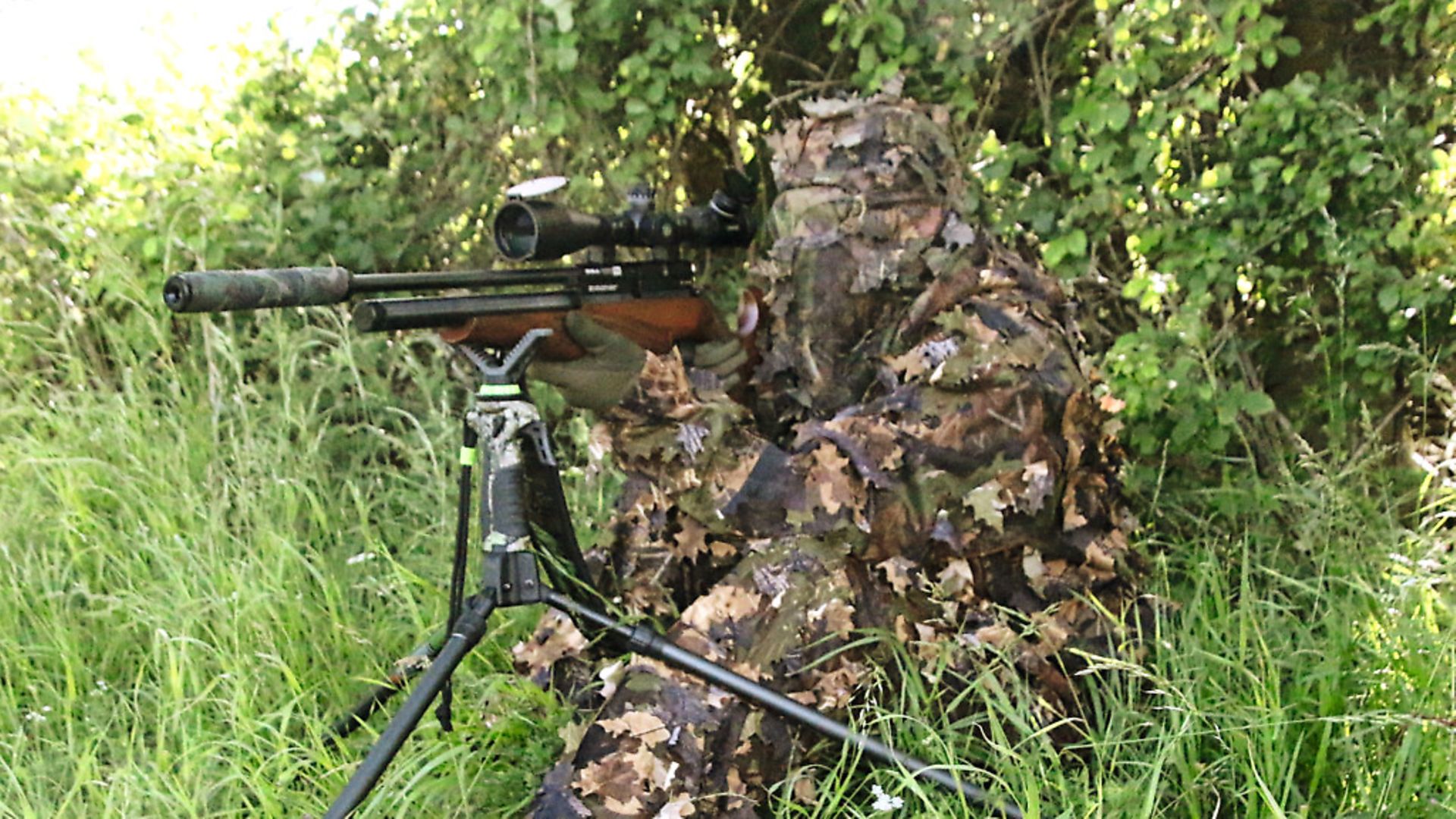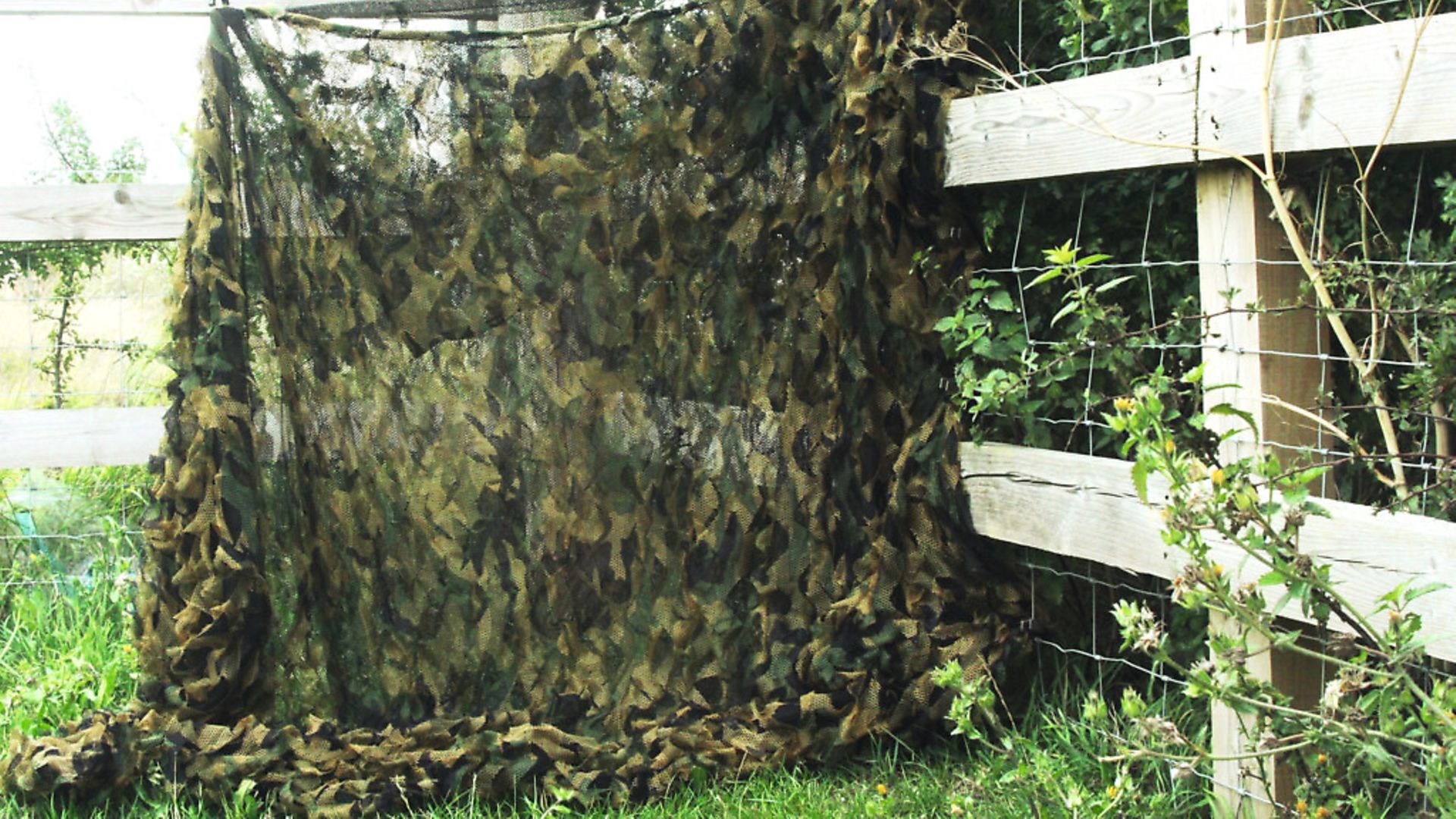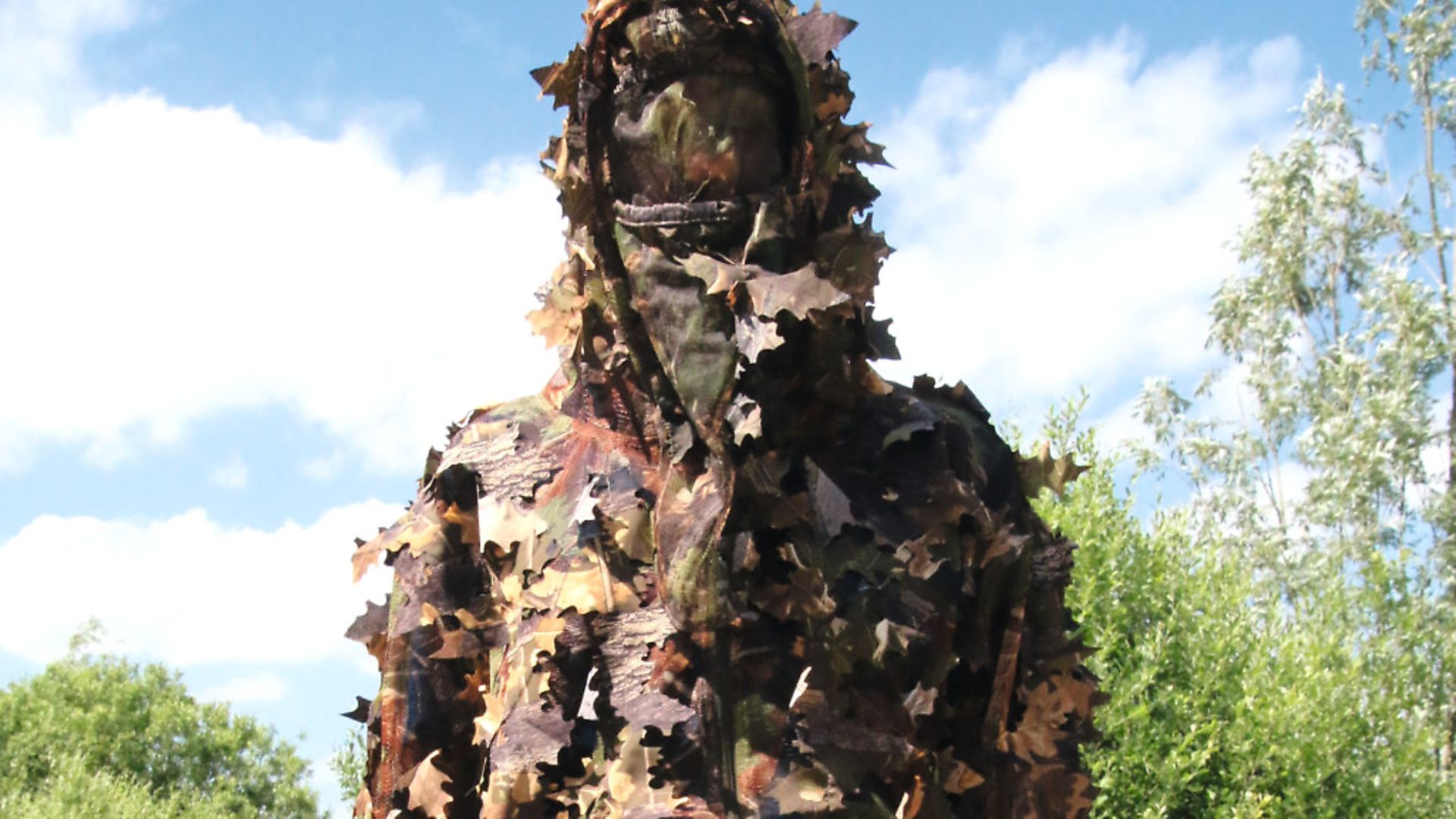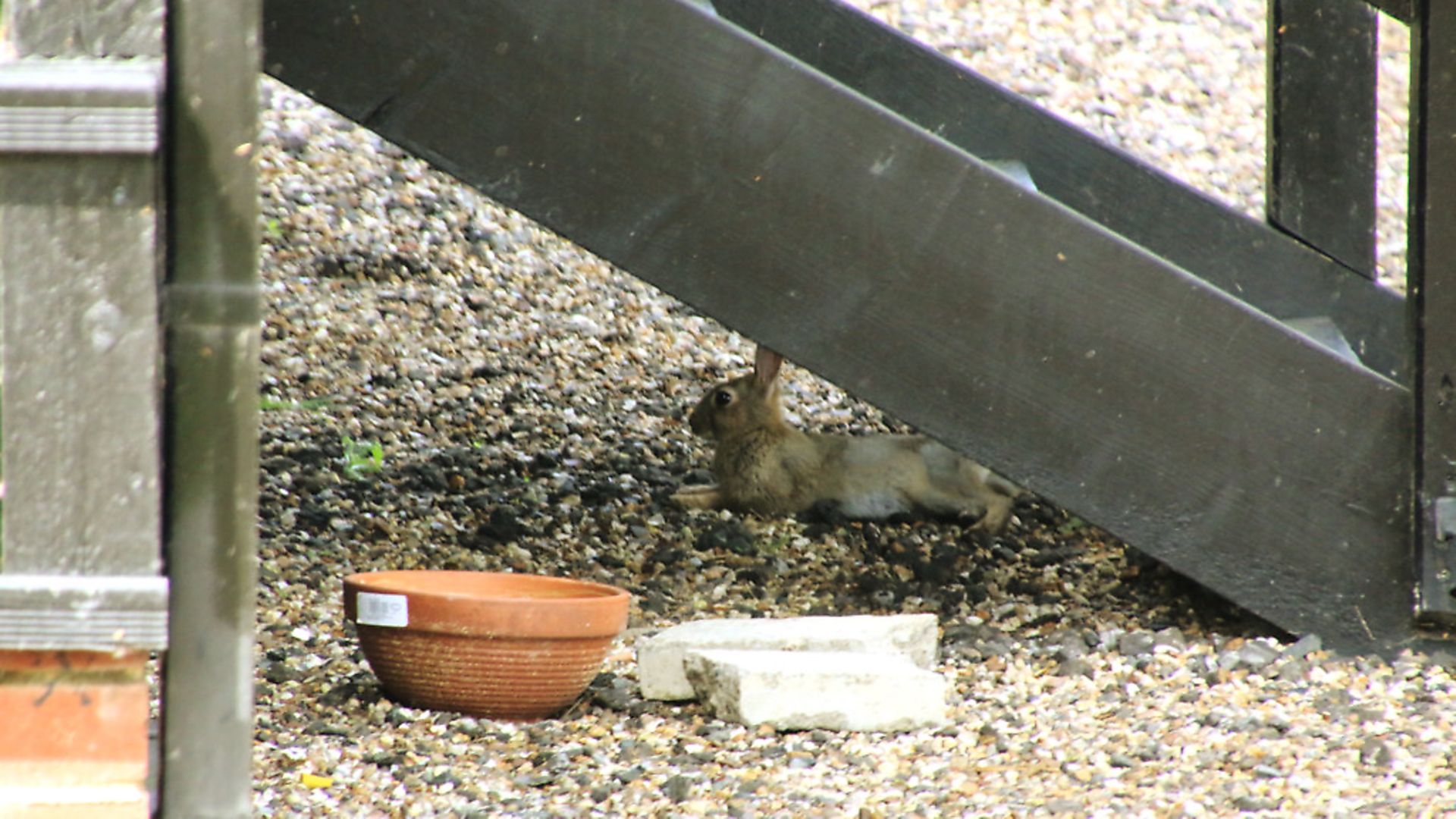Russel Webb brings us his views on static hunting
 credit: Archant
credit: Archant
As a novice air rifle hunter, I spent many unproductive days on my Cambridgeshire permission whilst trying to stalk within range of the local rabbit population. Unfortunately, my hunting skills were not good enough to enable me to get close enough to the rabbits to take a shot that would deliver a humane kill. As a result of these unproductive and frustrating days, my hunting technique evolved into static hunting – or as it is otherwise known, ‘sit and wait’ tactics. It is very difficult to go unnoticed when you are moving, but is very easy to blend in with the countryside by keeping still, combined with a combination of fieldcraft and concealment techniques.
The key to being a successful hunter with a sub 12 ft.lbs. air rifle is the ability to get close to your quarry. Developing good concealment techniques will ensure that you are able to go unnoticed by your chosen species, and hide-building is a very effective means of achieving that end. A hide can be anything that creates a screen to keep you hidden, from piles of branches and stacks of straw bales, to artificial hides created from modern camouflage netting.
Camouflage
 credit: Archant
credit: Archant
Hides can be split into two very broad categories; portable/mobile, or fixed. A good place to start when considering using a portable hide is the ghillie suit. The ghillie suit as a method of concealment was developed by Scottish gamekeepers as a portable suit/hide and was first worn by military snipers in the First World War.
Originally, the suit was made from a net or cloth garment covered in hessian or twine to resemble dense foliage. This helped the gamekeepers to stalk deer and enabled military snipers to blend into their background and conceal themselves from enemy soldiers. It is possible to construct your own ghillie suit using hessian sacking material, but I would advise against it – these garments can be impractical because they tend to be very heavy and hot.
Modern ghillie suits designed specifically for the hunter are much better than their predecessors because they are made from mesh, which makes them lightweight, cool in the summer, and they have realistic-looking, synthetic leaves that don’t fade, but move in the wind like real leaves. They are manufactured in a variety of camouflage patterns and fit over whatever clothing you are wearing. In the winter you can wear plenty of warm layers underneath, but in the summer it is possible to wear it over a long-sleeved T-shirt and a pair of lightweight trousers. The suits can be worn over normal clothes, but I have found that they work best with camouflage or dark-coloured clothing underneath.
LLCS
 credit: Archant
credit: Archant
The suit I have been wearing is the LLCS ghillie suit, sent to me by Jack Pyke. The LLCS (Light Leaf Concealment System) range of products are made using a three-dimensional leaf system which gives the camouflage pattern more depth and helps to conceal its wearer more efficiently than traditional, two-dimensional camouflage. The Jack Pyke LLCS ghillie suit is made from a lightweight, but very strong mesh as its base, with strips of thin taffeta sewn onto it in a rather clever way that makes them stand up and create the three-dimensional effect. The system is available in English Oak and English Woodland patterns, and the suit comes in two pieces; a pair of trousers with a drawstring waist, elastic cuffs, and slits for access to pockets, and a jacket with a drawstring hood. I found that the hood did a good job of concealing my face, but for maximum effect, a sniper veil or baseball cap should be worn underneath the hood. It’s best to think of a ghillie suit as a portable or mobile hide, rather than just a camouflage suit. Further information about the Jack Pyke range of products is available from their website.
Location
 credit: Archant
credit: Archant
The most important consideration when planning a static hunting session, be it in a ghillie suit or a hide, is choosing the site from which to shoot. This decision should be based on one factor, the location of your quarry. Time spent on reconnaissance is never wasted. Watching from a distance with a good pair of binoculars will ultimately put more quarry into your game bag. Long distance observation is probably the most effective way to discover the flight lines that woodpigeons use, or the routes rabbits take from their warrens.
Recently disturbed earth around a rabbit burrow and fresh rabbit poo are two of the most obvious indications of a healthy rabbit population in residence. Once you’ve identified a potential site for a hide, just sit there and watch what goes on for a couple of hours. This will give you the opportunity to judge the potential of the site by the frequency with which your quarry species makes an appearance. Range is also an important consideration. You should be able to take quarry with accurate and humane killing shots from the hide.
Most wild animals spend much of their time making sure that they don’t end up as prey, which means they will stay well away from anything out of the ordinary. To the wildlife on your permission, the woods and fields are as familiar as your own home. If you are observed by the local wildlife when you’re building a badly sited and poorly camouflaged pile of vegetation in the middle of their home, don’t be surprised if they all disappear. A little more planning and preparation of this type of hide can work, though, if it is built as a permanent fixture of on your permission. The problem will be that it requires almost constant maintenance because the leaves will droop and die, leaving gaps in the walls of the hide. It is far better to use a modern, lightweight camouflage net and hide poles as the basis for your hide, and then add odd bits of vegetation to enhance its concealment. After a couple of days, the wildlife will get used to this new part of the landscape and stop avoiding it.
Urban hide
 credit: Archant
credit: Archant
Do not make the mistake of thinking that hides are only something to be built out in the fields or the woods. Static hunting techniques can also be used very successfully around farm buildings when combined with good concealment. Your car will provide the best type of warm, dry and comfortable mobile hide if you can get it into position near to your target species. Farmyard vermin is very familiar with vehicles, so they should not be disturbed by the sight of yours – just remember to check that no farm employees are going to be working in the area you intend shoot.
A camouflage net placed over the back of the car will help to provide a backdrop for your mobile hide, otherwise when you move, your target species may see a shadowy movement inside the vehicle as your silhouette moves to take a shot. Good concealment techniques should mask all the movement that’s necessary for you to make whilst in the hide, but don’t forget your own comfort. A numb bum, pins and needles, or the need to empty your bladder will ruin a session in the hide.
I learned the hard way the importance of having a pee before starting a static hunting session, but I will tell you more about more of that next month’s article.